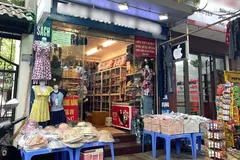
Professor NGUYEN MAI, Chairman of Vietnam Association of Foreign Invested Enterprises (VAFIE) spoke with Saigon Investment and provided some of his analysis and recommendations.
JOURNALIST: - Sir, what do you think about the prospects of Foreign Direct Investment flow into Vietnam this year?
Prof. NGUYEN MAI: - Forecasts given by the United Nations Conference on Trade and Development (UNCTAD), which is the world's most trustworthy platform, shows that global Foreign Direct Investments will recover in 2022, and return to the 2019 levels by 2023, and even grow much higher by 2024 and 2025. A report on ASEAN released by UNCTAD in late 2021 included some positive predictions that Vietnam remains a relatively successful country and a promising future destination for foreign investors. Investigations released in recent months by foreign chambers of commerce like Amcham, Eurocham and Kocham indicate that 60% to 65% of foreign businesses in Vietnam have plans to expand their business activities in 2022 and in the years to come. This is a pretty high percentage compared with many other countries.
Vietnam's top leaders and officials such as the President, the NA Chairman and the Prime Minister have made very significant visits to Europe, the USA, India, the Republic of Korea and some ASEAN countries. At high profile talks or investment promotion conferences, European and US Corporations vowed to pour remarkably large investments into Vietnam, including for gas power plants and offshore wind energy projects worth billions of US dollars. Such signals can ensure us that foreign investment capital in Vietnam will increase by about 10% to 15%, or between USD 31 bn and USD 36 bn. This means that we could reach the goal set by Resolution 50-NQ/TW issued on 20 August 2019 by the Politburo, aimed at improving the laws and policies for better quality and more effective foreign investment cooperation by 2030.
- Sir, this means that attracting sufficient FDIs could be within our reach. What do you think about our possible selection of good quality FDI projects with application of new and high technology as directed in Resolution 50-NQ/TW?
- Resolution 50 sets requirements for application of advanced technology, modern management and environmental protection in 50% of production activities by 2025 and 100% by 2030, as compared to 2018; and the localization rate, which is now 20% to 25%, is required to be raised to 30% by 2025 and 40% by 2030. I believe we will hardly meet the requirements if we do not have effective measures.
In order to attract high-quality Foreign Direct Investments, we must be able to appeal to large international corporations that are willing to transfer technologies, provide adequate training for workers and satisfy the prerequisites for green and sustainable development. These matters require suitable and appropriate measures. The first step, as directed in Resolution 50-NG/TW, is to establish and perfect the FDI laws and policies in line with latest development trends and international advancement. When we fulfill our responsibilities in accordance with the new generation of Free Trade Agreements, we are required not only to comply with trade and investment regulations, but also assume different responsibilities, including responsibility for guaranteeing the workers' rights and gender equality. EU also set high requirements for origins of products, food safety and environmental protection.
Many people may ask why we have been talking a lot for years about trying to perfect our laws and policies but they still are not yet perfect. It is true that we have not been able to make our laws perfect enough although we switched to the market economy thirty-five years ago. The laws and regulations must be enforced strictly from the central agencies to the provincial ones, especially by the authorities in charge of Industrial Parks (IPs) and Export Processing Zones (EPZs). In order to attract high quality FDIs, we must make IPs eco-IPs and our cities into eco-cities. We must not allow construction of IPs in the same old ways. Instead, we must build IPs with houses for workers, kindergartens, schools and hospitals, and other such basic needs of the people. This complies with the required laws and regulations.
The second step is to make every effort to attract major projects from the EU and the USA as well as take the most advantage of the good relationships with Japan, the Republic of Korea and the ASEAN community. We should also take a closer look to see why investment flows from these countries into our country have not been as much as into other countries like Thailand, Indonesia, Malaysia and the Philippines.
I do believe that we have not met three of the requirements. The first one is intellectual property protection. We have all the necessary laws, but enforcement remains a problem, making it impossible to stop things like violations of copyrights and trademarks. The second one includes requirements for publicity, stability, no discrimination and no unofficial hidden costs. The last step is a requirement for quick responses and formalities which are still very slow and complicated, and may take investors up to a year to complete procedures for a project to get started, and then years to complete the formalities for fire control and prevention as well as land clearance.
The third step is to have new ideas and actions, and there should be a thorough reform in administrative affairs on a national basis. Additionally, investments should be focused on specific areas. For instance, Hanoi needs to have IT, AI or Big data projects, and the capital officials should proactively call for investments from the EU and US Corporations. The fourth step, which plays a pivotal role in promoting productive investments, is to create favorable opportunities for foreign investors who are currently operating their businesses in Vietnam, because they can offer the most persuasive advertisement of the image of things that are Vietnamese or related to Vietnam.
- Thank you very much.




















